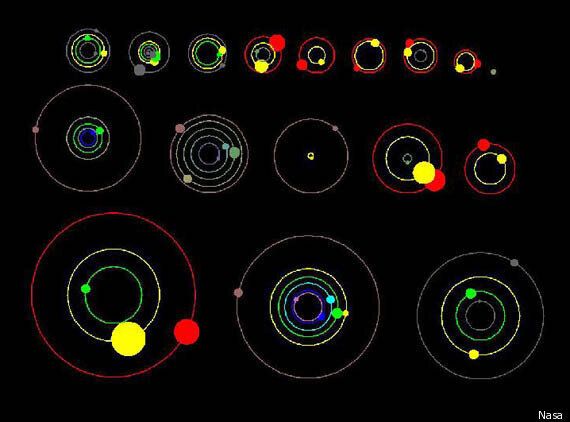
Eleven new planetary systems containing 26 confirmed new planets are all in a day's work for Nasa's Kepler mission.
The gob-smacking discoveries just about double the number of planets that we know of, and triple the number of stars that are known to have more than one planet.
The newly spotted planets vary hugely in size from 1.5 times the radius of Earth to larger than Jupiter.
Fifteen are between Earth and Neptune in size. Some are rocky like Earth, but have thick gaseous atmospheres like Neptune.
Nasa reports that the planets orbit their star once every six to 143 Earth days and are all closer to their host star than Venus
is to the sun.
"Prior to the Kepler mission, we knew of perhaps 500 exoplanets across the whole sky," said Doug Hudgins, Kepler program scientist at NASA Headquarters in Washington. "Now, in just two years staring at a patch of sky not much bigger than your fist, Kepler has discovered more than 60 planets and more than 2,300 planet candidates. This tells us that our galaxy is positively loaded with planets of all sizes and orbits."
The Kepler mission just keeps on wowing the world with its discoveries. Three small exoplanets, a 'Tattooine' planet (Kepler 16b) with two suns, Kepler 22b, the earth-like planet and teh Kepler 20 system are just a few of the discoveries made.
Kepler has been in space searching for habitable planets for over 1000 days, and was launched in March 2009.